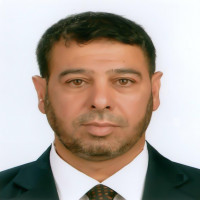Research Article
Aim & Scope
İAÜ Journal of Arabic Studies is a scientific publication published within the framework of international refereed publishing principles of the Faculty of Education, Department of Arabic Language Education. Aydın Journal of Arabic Studies aims to publish the scientific articles of the essence in line with international publishing principles in order to open up to the world under the guidance of science, to reach the society in which they live, and to lead their changing and developing demands. Aydın Arabic Studies Journal is the publication of Istanbul Aydın University. In the journal, studies such as teaching Arabic, Arabic language and literature, and editorial criticism of manuscripts that have survived in this field are published. It is a periodical that publishes original Turkish, English and Arabic scientific articles on various topics. Aydın Arabic Studies Journal is a refereed journal and has been published since 2019. Aydın Journal of Arabic Studies (ARAD); It is a peer-reviewed and scientific journal published twice a year in print and electronically. Original theoretical and / or experimental work, articles in which various scientific research methods are applied are accepted. In Aydın Journal of Arabic Studies (ARAD); The editorial board is authorized to accept or not to accept articles by the evaluation of international experts.
İAÜ Journal of Arabic Studies is a scientific publication published within the framework of international refereed publishing principles of the Faculty of Education, Department of Arabic Language Education.
In the journal, studies such as teaching Arabic, Arabic language and literature, and editorial criticism of manuscripts that have survived in this field are published.
The language of the journal is Turkish, Arabic, Persian and English. It is published twice a year (December-June).
The responsibility of the articles published in the journal and the resources used belongs to the authors.
Author Guidelines
Page Layout
Margins: up 3,5; down 2,5; left 2,5; right 2 cm with 170 mm X 240 mm over all text space.
Type of Font
Times New Roman style should be used. Turkish Abstract English Abstract should be in 11 pt, main text should be 10 pt. Text, Turkish-English abstract and the sources used should be justify. Text should be written using single line spacing, 1 line spacing between paragraphs should be left.
Headlines
The manuscript should be composed of main headings and sub-headings.
Main Title
Times New Roman character, using capital letters, bold and must be in Microsoft Word format in 14-pt format. Author name, abbreviations, author ORCID number and e-mail addresses should be written with two lines of space after the title and the name of the author should be written in 11 pt font size.
Abstract (ÖZ)
The text should be written in 11-pt font in Times New Roman font style and in a single paragraph in Microsoft Word format. Must not exceed 300 words and should be bold, 11 pt. Keywords should be in italic, bold type and 11 pt. At least three, maximum five key words should be written with the first letter and the other letters with small letters. In abstract (ÖZ), subject of the article, research method and result should be given.
Abstract
Abstract title should be written with two lines of space after Turkish keywords. Times New Roman should be in bold, 11 pt, justified, and in single word Microsoft Word format using capital letters. Should not exceed 600 words and abstract should be bold, 11 pt. and all text should be written in Microsoft Word format in Times New Roman style. Keywords in abstract should be in italic, bold type and 11 pt. At least three, maximum five key words should be written with the first letter and the other letters with small letters. In abstract, subject of the article, research method and result should be given.
Sections
Section subtitles (INTRODUCTION, CONCEPTUAL FRAME, LITERATURE SCANNING, RESEARCH METHODOLOGY, FINDINGS, CONCLUSION, etc), which are formed according to the content of the article, should be all uppercase, 11 pt and bold, and they should be typed without numbering.
Main Text
Subtitles should be written in 11 pt, bold and capital letters and the text should be in 11 pt., Times New Roman style in Microsoft Word format. Articles should be written in a single column, justified, and in a single space between paragraphs. The subtitle of the first section should start with a line space after the keywords and there should be no spaces in the following paragraphs. Article length must not exceed 20 pages with shapes and figures
Tables, Figures, Graphics and Pictures
If the tables, figures, graphics and pictures used in the text are not originally created by the author (s), they can be used in the text by showing “source”. Tables, figures, graphics and pictures should be placed to fit the text and the headings should be written in 11 font size and centered. Tables and graphs used in the text should be listed as Table 1., Table 2. / Chart 1., Chart 2. etc. and so on. Table numbers and titles should be written before the table. Figures, graphics and pictures of the numbers and the headers (figure, graphic and picture) then the bottom of the Figure 1., Figure 2. / Picture 1., Picture 2. etc. should be written as ordered. The first letters of the words used in the tables, figures, graphics and image titles should be initials large and the others are small.
Conclusion
The title should be written in bold, 11 pt, capital letters and text in 11 pt. Times New Roman style in Microsoft Word format.
In-article Reference Representation
Reference within the article should be arranged in accordance with the APA rules.
See the APA reference guidelines: https://www.citefast.com/styleguide.php?style=APA&sec=form
Reference to single authored sources: (Atılgan, 2015: 28) , (Atılgan, 2015: 28-32)
Reference to sources with two authors: (Atılgan & Demir, 2015: 28), (Atılgan & Demir, 2015: 28-32)
When reference is made to sources with five authors for the first time: (Atılgan, Demir, Çelik, Savaş & Yıldırım, 2015: 28)
When reference is made to sources with five authors for a second time or more: (Atılgan vd., 2015: 28)
When references to resources with more than five authors are made for the first time: ( Atılgan, Demir, Çelik, Savaş, Yıldırım….Işık, 2015: 28)
Reference to sources with more than five authors for the second time or more times: (Atılgan vd., 2015: 28)
When reference is made from the Internet: (Mills, 2012)
Bibliography
Reference within the article should be arranged in accordance with the APA rules.
See the APA reference guidelines: https://www.citefast.com/styleguide.php?style=APA&sec=form
Single Author Book
Tuncer, D. (1992). Dağıtım Kanalları Sistemi. Ankara: Gazi Yayınları.
Two Authors Book
Turgut, M. F. & Y. Baykul. (1992). Ölçekleme Teknikleri. Ankara: ÖSYM Yayınları.
Edited Book
Theberge, J. (Ed.). (1968). Economics of Trade and Development. New York: John Wiley.
Translation Book
Morgan, L.H. (2015). Eski Toplum. (Oskay,Ü. Çev.), İstanbul: İnkılap Yayınevi.
Part of Book
Ünlüer, A.O. (1988). Boş Zamanı Değerlendirme Açısından Kitle İletişim Araçlarının Ülkemizde Durumu. Demiray, U. (Ed.). Kitle İletişim Araçları ve Boş Zaman.(ss.71-113). Eskişehir: Anadolu Üniversitesi Eğitim Teknolojisi ve Yaygın Eğitim Vakfı.
Published Magazine
Engin, B. H. (2016). Markalaşma Kavramı Çerçevesinde Marka Ederi. Öneri Dergisi. 12 (46): 277-294.
Electronic Magazine
Yengin, D. & Algül, A. (2018). Küreselleşme Bağlamında Sanal Gerçeklik Kullanımı. Turkish Online Journal of Design, Art and Communication-TOJDAC. 10 (2): 155-126. doi: 10.7456/10902100.
Published Journal
Kumcu. E. (2006, 11 Aralık). Büyüme yavaşlama sinyali veriyor. Hürriyet Gazetesi. s.9.
Electronic Journal
Mills, S. (2012, 16 Ekim). How Twitter is winning the 2012 US election. The Guardian. https://www.theguardian.com/commentisfree/2012/oct/16/twitter-winning-2012-us-election (Erişim tarihi: 10 Temmuz 2018).
Dissertation
Algül, N. (2006). Sanat Tarihinde Mahmut Akok. Marmara Üniversitesi Türkiyat Araştırmaları Enstitüsü Türk Sanatı Anabilim Dalı Yayınlanmamış Doktora Tezi, İstanbul.
Web Page
Yavuz, E. (2018, 7 Kasım). Zaman ve İnsan Üzerine. https://dusunbil.com/zaman-ve-insan-uzerine. adresinden alındı. (Erişim tarihi: 10 Temmuz 2018).
Report
Taymaz, E. (2018). Dijital Teknolojiler ve Ekonomik Büyüme Raporu. (TÜSİAD-T/2018,10-600).
Electronic Report
Taymaz, E. (2018). Dijital Teknolojiler ve Ekonomik Büyüme Raporu. (TÜSİAD-T/2018,10-600). https://www.tusiad.org/tr/yayinlar/raporlar/item/10130-dijital-teknolojiler-ve-ekonomik-buyume-raporu. (Erişim tarihi: 10 Temmuz 2018).
Ethical Principles and Publication Policy
Principles of Research and Publication Ethics
In scientific papers sent to ARAD, the guidelines related to the Scientific Research and Publication Ethics of Higher Education Institutions, the recommendations of the International Committee of Medical Journal Editors and the International Standards for the Authors and Authors of the Committee should be taken into attention. Plagiarism, forgery in the data, misleading, repetition of publications, divisional publication and individuals who do not contribute to the research are among the authors are unacceptable practices within the ethical rules. Legal actions will be taken in case of any ethical irregularity related to this and similar practices.
a)Plagiarism: Placing the original ideas, methods, data, or works of others, partly or completely, without making reference to the scientific rules, is dealt with in the context of plagiarism. In order to avoid plagiarism, the authors should refer to the scientific rules in a manner that is appropriate and should pay attention to the references of all scientific papers in their research.
b)Forgery of Data: The use of data that does not exist or is modified in scientific research is data in the scope of forgery. Authors should analyze their data in accordance with ethical rules and without exposing them to a change in validity and reliability during the process.
c)Detortion: Changing the records or data obtained from the study, showing the devices or materials that are not used in the research as used, changing or shaping the research results according to the interests of the people and organizations that are supported are considered within the scope of distortion. The authors should be honest, objective and transparent in the information they provide in relation to the research process. They should avoid violating the rules of ethics.
d)Repetition: Presenting the same publication as separate publications without referring to the previous publications is considered within the scope of repetition of publications. The responsibility for the publication of the publications submitted for evaluation in another place or in the evaluation process belongs to the authors. The authors should refrain from repeating the original and original research and they should pay attention to submit their original and original research.
e)Divisional Publication: The results of a research are discussed in the scope of dissemination and disseminating the results of the research in a way that disrupts the integrity of the research and disseminating it in more than one way, and publishing these publications as separate publications. The authors should consider the integrity of the research and avoid the divisions that will affect the results.
f)Authorship: The inclusion of people who do not contribute to the research or not to include the people who have contributed is considered within the scope of unfair writing. All authors should have contributed sufficiently to the planning, design, data collection, analysis, evaluation, preparation of the research and finalization of the research.
Ethics Committee Approval
"Ethics Committee Approval" is required for the following researches. An approved “Ethics Committee Approval ” must be obtained from the institution where the author of the article is located. Researches requiring from the Ethics Committee Approval are as follows:
Any kind of researches carried out with qualitative or quantitative approaches that require data collection from participants using questionnaire, interview, focus group works, observation, experiment, interview techniques,
· Usage of humans and animals (including material / data) for experimental or other scientific purposes,
· Clinical researches on humans,
· Researches on animals,
· Retrospective studies in accordance with the Law on Protection of Personal Data,
Also;
· Stating that “Informed consent form” has been taken in the case reports,
· Obtaining and specifying the permission of the owners for the use of scales, questionnaire and photos belonging to others,
· Stating that copyright regulations are obeyed for the ideas and works of art used.
In these articles, “Ethics Committee Approval ” should be stated in the article. The articles should include the statement that Research and Publication Ethics are complied with.
Price Policy
Makale gönderim/süreç işletimi ücretsizdir.
Indexes
Other Indexes
Journal Boards
Editör
Editör Yardımcısı




 Web
Web
دكتور في اللغة العربية وآدابها، والدراسات القرآنية


Roghayeh Pourbahram holds a PhD in Applied Linguistics and is now an assistant professor of ELT at Istanbul Aydin University. Her main research interest lies in the areas of teacher education, second language learning, and assessment. Her research publications have appeared in the System, TESOL Journal, Social Sciences and Humanities Open, Iranian Journal of Language Teaching Research, Porta linguarum, and the European Journal of Language Policy. She is also a reviewer for a number of journals, including System, Teaching and Teacher Education, and Social Sciences and Humanities Open. Her recent chapter appeared in the Routledge Handbook of Technological Advances in Researching Language Learning.


